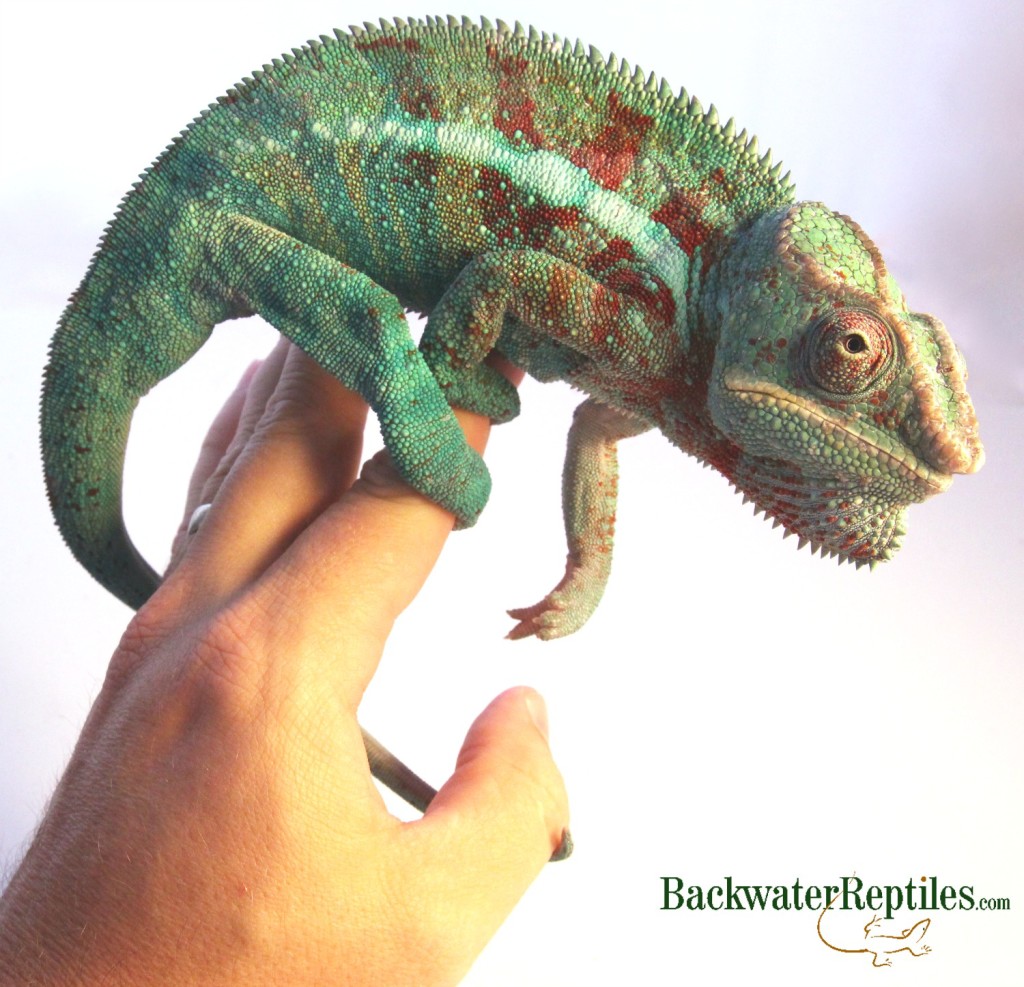You might want to know what gender your panther chameleon (Furcifer pardalis) is for many reasons. Maybe you want to begin a breeding project. Perhaps you got a new family pet and you are trying to decide on a name. Or maybe, you’re just plain old curious.
Never fear – at Backwater Reptiles, we breed, feed, handle, and care for Panther chameleons on a daily basis, and we’re prepared to help you be able to tell if your Panther is a lady or a gent.
Color
The biggest indicator of adult Panther chameleon gender is color. In the wild, juvenile and adult males use brilliant colors to attract mates as well as defend territory against rival males, so bright, bold colors are the number one indicator that you have a male chameleon.
Blues, greens, and deep reds are all colors that are primarily displayed by adult males. Females on the other hand, tend to be duller and will usually be peach, pinkish, tan, grey, or brown in tone.


Tails
Although male chameleons don’t have external genitalia like mammals do, they do still have a trait that distinguishes them from females called the hemipenal bulge. The hemipenal bulge is a natural bulge at the base of the male’s tail where his reproductive organs are located.

This trait is noticeable very early on in the chameleon’s life cycle. At even a young age, male Panthers have fatter and thicker tails bases than females. The females will actually have a small indent where the cloaca is located at the base of the tail.
Rostral Process (AKA Nose Ridge or Bump)
Once the males have grown a bit, they will begin to develop a ridge or bump on their nose that extends along back to both eyes. This will become quite large and pronounced as the males become fully mature.
Females on the other hand, might develop very tiny rostral processes, but they will always stay small, especially when compared to that of a male.

Size
Full grown male Panther chameleons will grow to be anywhere from twelve to eighteen inches long. Females will be smaller – anywhere from ten to fourteen inches long.

Males are also heftier and bulkier than females in general. Their tails will not only have bulges, but will be thicker in overall girth when compared with a female’s.
Conclusion
Sexing a baby Panther chameleon can be tricky. It’s best to wait at least a month or month and a half sometimes when determining gender. But if you are dealing with adult Panthers, the process is much easier as males and females are very different in terms of size, color, and even morphology to a certain extent.
If you are interested in owning your very own Panther chameleon, Backwater Reptiles offers both male and female Panther chameleons for sale. We also have a very informative blog article detailing how to breed Panther chameleons if you are interested in producing some cute little babies of your own.
